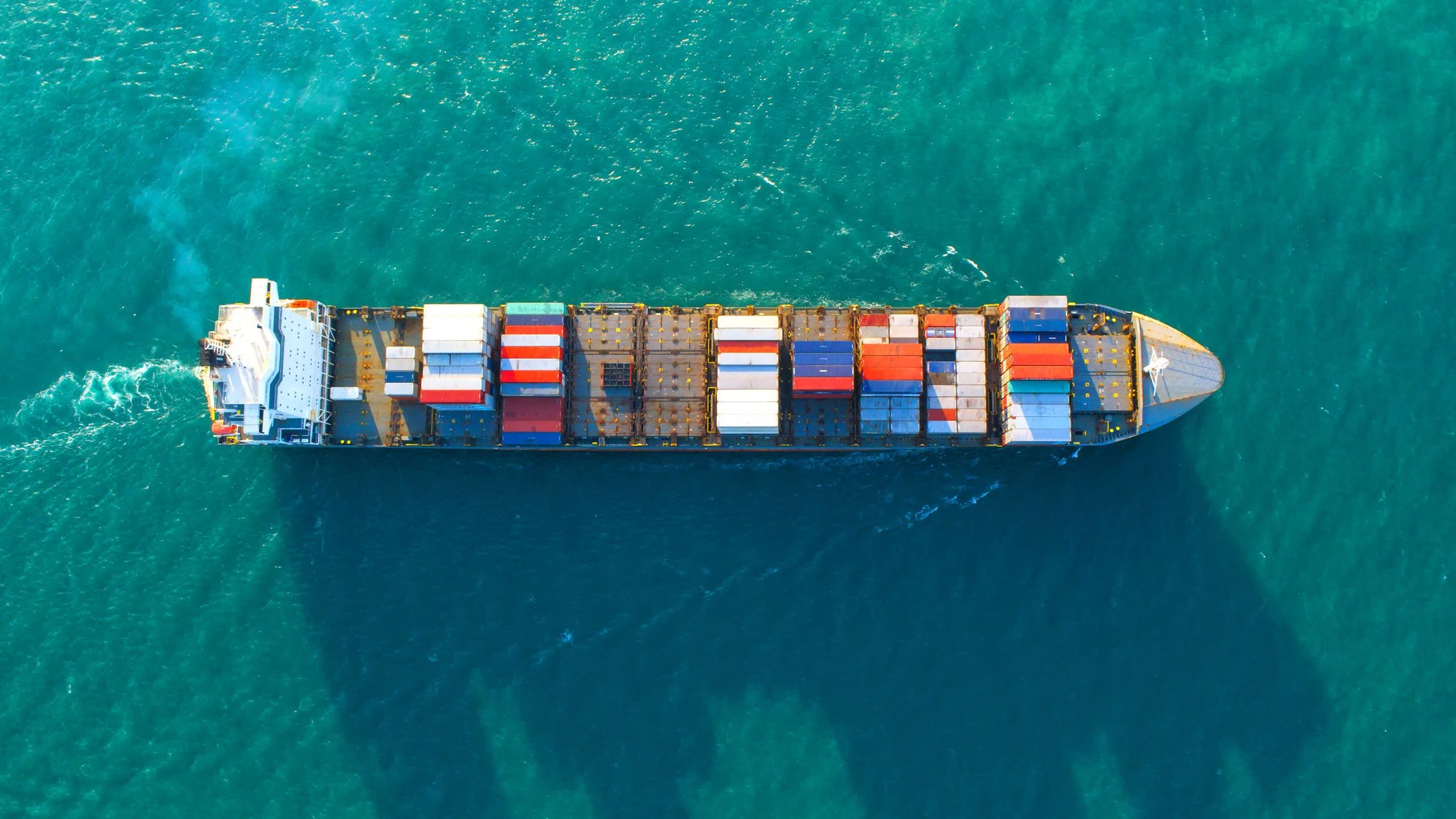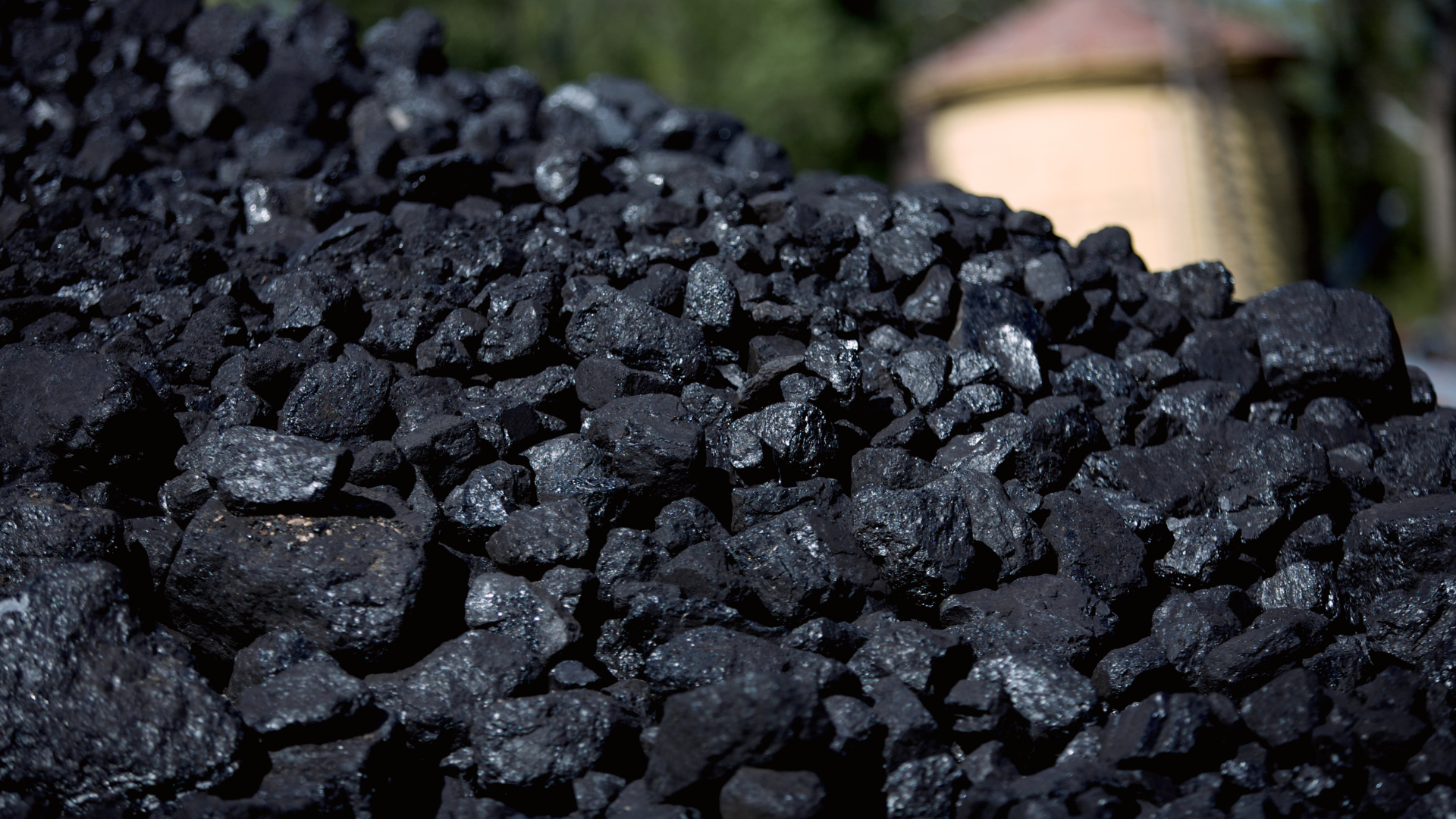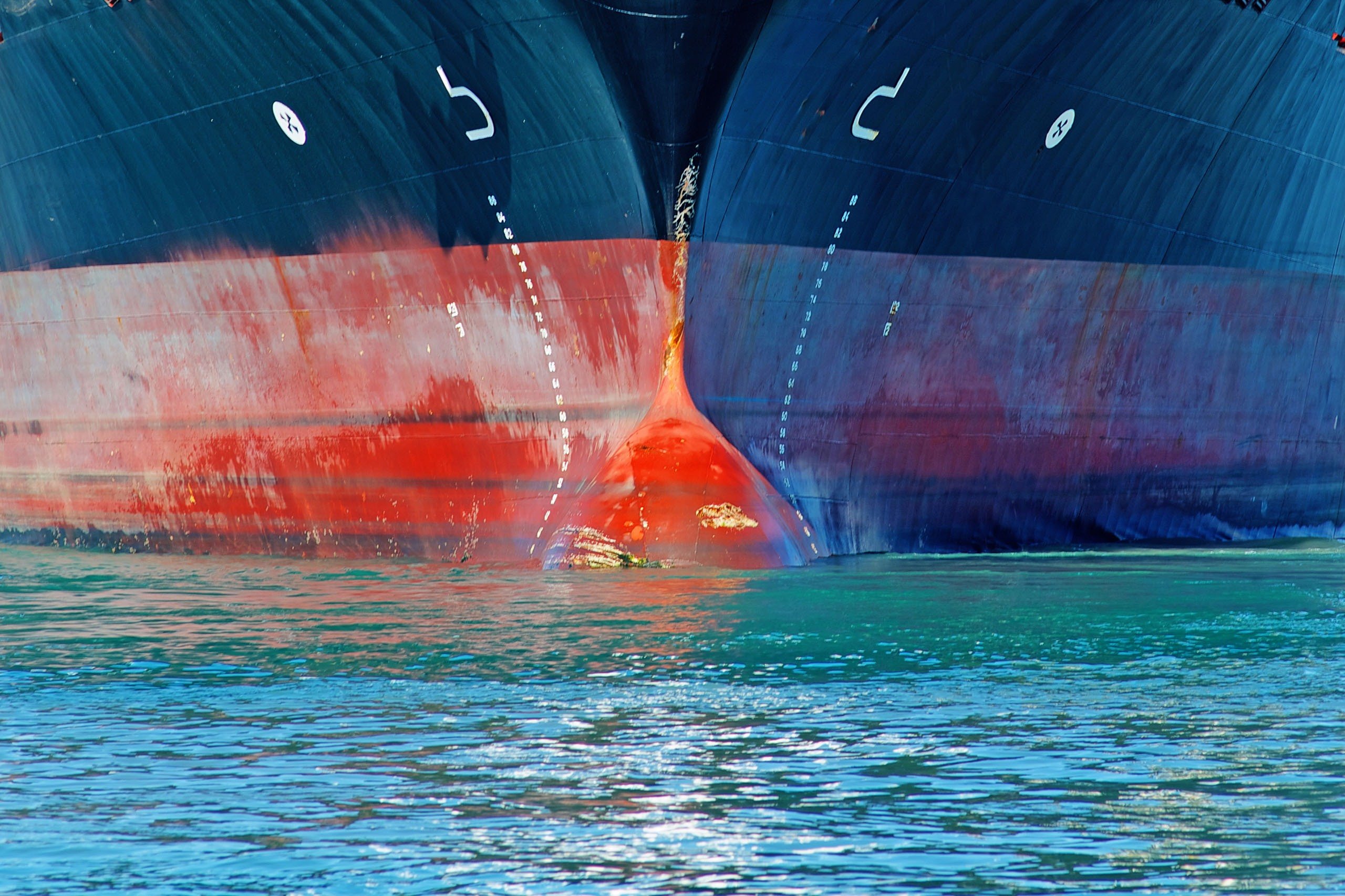
前回の記事では、ネットゼロの実現に向けた業界の動きにおいて、燃料転換が果たす役割について説明しました。今回の記事では、業界が脱炭素化を実現する上で潜在的な道筋と見ているゼロカーボン燃料に焦点を当てています。燃料転換へ向けた動きは進んでいるものの、パリ協定の目標気温に沿って2050年までに海運の脱炭素化を実現するためには、2030年までに国際海運燃料の5%、国内海運燃料の15%をゼロエミッション燃料に転換する必要があると推定されています。
So, what is a zero emission fuel?
The term ‘zero emissions’ has become common parlance to describe zero carbon emitting fuels, carbon being the main source of GHG emissions in the shipping industry. However, other GHGs such as methane (CH4), nitrous oxide (N2O), hydrofluorocarbons (HFCs), perfluorocarbons (PFCs), sulphur hexafluoride (SF6) and nitrogen trifluoride (NF3), occur both upstream in energy production and in ship operation must also be considered.
A brief word on the calculation of emissions
It is crucial, when assessing a fuel’s emission credentials, to understand what emissions are included in the calculation. The more complete approach is to consider emissions on a well-to-wake (“WtW”) basis, as this allows for the accounting of GHG emissions released from extraction or production and distribution to final use onboard the ship.
It is not easy, however, for owners or operators to obtain an accurate figure for the upstream GHG emissions and many of the shipping industry’s regulations are currently based on a tank-to-wake (“TtW”) basis (for example, EU MRV Regulations, IMO Data Collection System or CII) that do not include upstream GHG emissions.
Bureau Veritas has produced a very helpful infographic, explaining WtW and TtW emissions, which can be downloaded here.
A WtW approach is important as a fuel’s sustainability ranking may be influenced by several factors and parameters. For example, a fuel produced with renewable energy but transported to its final use point using fossil fuels may have a higher WtW emissions profile than a more GHG-heavy fuel produced and consumed locally.
To achieve decarbonisation in WtW terms, and the aforementioned Paris-aligned goals, it will take far-reaching co-operation from across the industry, including upstream energy and chemical suppliers to authorities and financiers.
The shipping industry is looking at various fuels as pathways to full decarbonisation, although as with the transitional fuels discussed in our last article, there are some favourites emerging from the pack, which are discussed in more detail below.
Ammonia (NH3)
Unless otherwise indicated, when we talk about ammonia in this article, we refer to green ammonia, i.e. ammonia produced by electrolysis powered by renewables or nuclear power, which could provide the industry with a promising zero emission fuel if adequate investment is made in relevant technology, production capacity and scalability, infrastructure, safety and training.
Production and Infrastructure
As the name ‘future fuel’ suggests, the technological maturity of ammonia with regards to its availability, infrastructure and production as a fuel is still in its infancy. Almost all ammonia in use today is produced using hydrocarbon fuel sources, which confer almost no carbon abatement advantage. Substantial investment will be needed to produce the levels of green ammonia needed to make it a financially viable option for the shipping industry.
Currently, no ammonia-fuelled engines are commercially available and no ships are equipped for ammonia propulsion. Two-stroke ammonia-fuelled internal combustion engines (“ICE”) are targeted for delivery in 2024, with Solid Oxide Fuel Cells (“SOFC”) to be directly fuelled by ammonia in the early stages of development. The fact that the SOFC are directly fuelled means that there would be no nitrous oxide production, providing higher efficiency and causing less vibration[1] in the engine than in a traditional ICE, due to the lack of moving parts.
Ammonia has long been shipped and traded globally, with 80% traded as fertiliser. This offers an advantage in that its qualities are already well-known to the industry, with existing infrastructure for storage in place. Accordingly, ammonia cargo operators are already well-versed in its specific safety and handling procedures.
Another advantage to ammonia production is that one of the elements that ammonia is composed of, nitrogen, it is readily available, making up 78% of the air we breathe. Ammonia is gaseous at ambient temperatures, with similar characteristics to LPG, giving the possibility that LNG and LPG containment systems might also be ammonia-compatible[2].
Bunkering
Ammonia as a liquid has very similar properties to propane and is stored in the same fashion. This means that ammonia could feasibly be bunkered in a manner recognisable to the industry today, i.e. from terminals or trucks onshore or from bunkering vessels. However, because it is stored at pressure and in refrigerated conditions, both the bunkering tanker (either via truck onshore or barge at sea) and the vessel to be bunkered would require specific equipment – heat exchangers, vapour return systems, compressors, etc. – and detailed bunkering procedures would be needed to ensure safety during bunkering operations.
The Global Centre for Maritime Decarbonisation has launched a study involving cross-industry stakeholders, to formulate technical, procedural and regulatory guidelines for ammonia transfer and bunkering, with the aim of sourcing up to two sites in the Port of Singapore for ammonia bunkering (one each for truck-to-ship and ship-to-ship ammonia bunkering modes).
Challenges
Ammonia as a fuel also faces a number of challenges. It is corrosive, highly toxic and potentially fatal even in low concentrations, necessitating advanced crew training in the operation of an ammonia-fuelled vessel, including handling, maintenance and bunkering. It is also toxic to aquatic life, adding concerns in the event of a spillage.
The combustion process of an ammonia-fuelled vessel would have to be carefully managed to minimise the emission of nitrous oxide (N2O) and nitrogen oxides (NOx). N2O has a global warming potential 273 times higher than CO2.
Additionally, on a WtW basis, fossil fuel-based ammonia has a poorer emissions profile than conventional fuel oils. This is because not only is the fuel itself produced using large quantities of fossil fuels as an energy source, but also because of the carbon-heavy processes that take place in the Well-to-Tank (“WtT”) portion of the fuel’s journey to the vessel. This means that there would need to be a drastic switch to low-carbon supply chains in order to see any meaningful decarbonisation. The lower energy density of ammonia (about a third) when compared with conventional fuel oil would also mean either a substantial increase in the amount of fuel carried onboard, meaning that there would need to be larger tanks or more frequent calls for bunkers.
Ammonia’s relatively low flammability, when compared with conventional fuels also presents a challenge, as sustaining combustion once underway is also more difficult with ammonia than with other fuels. Indications are that it would need a hydrocarbon-based pilot fuel (for example, biodiesel to operate efficiently).
| Advantages | Disadvantages |
|
|
|
|
|
|
| |
|
Hydrogen (H2)
Once more, when we talk about hydrogen in this article, we are referring to green hydrogen, i.e. hydrogen produced from renewable electricity via electrolysis.
Hydrogen is another promising option in the industry’s push to zero emissions shipping. Scaled-up hydrogen production has the potential to offer clean energy, producing no emissions except water vapour. However, it is not without its challenges, chiefly surrounding safety, infrastructure, technology and scaling up hydrogen fuel production.
Whilst there are currently vessels using hydrogen as a fuel, production is largely fossil fuel based. As such, it comes with the same issues around its WtT emissions profile as described for ammonia, above. This means that although the TtW emissions profile of the ship can boast ‘zero emissions’, the WtW profile would show considerable GHG emissions.
Production and Infrastructure
Hydrogen is the most abundant element on earth but is rarely found in its pure form (H2). Currently, the production of hydrogen emits 830 million metric tons of CO2 globally each year. For context, that’s more than the total CO2 emissions of Germany in 2017.
The large-scale access to renewable electricity is currently a key barrier in attempts to scale up production of green hydrogen, and to keep it financially competitive with traditional fuels. It is unlikely that this will be possible without governmental and supranational support for research and development. Similarly, large-scale investment in bunkering facilities and terminal networks will be needed.
Technology
With the use of fuel cells, hydrogen is envisioned to be well-suited for inland navigation vessels and shorter voyages. On larger vessels, it is envisioned for powering auxiliary systems, with more research needed to see if hydrogen can be scaled up to be used in a ship’s primary engine for propulsion.
Challenges
The main concerns surrounding hydrogen are over its safety as a fuel. It is extremely flammable and explosive, burning with an invisible flame at 2,000°C[3].
Onboard storage and energy density also present issues. When compared with traditional fuel oils (HSFO – 37.3 MJ/litre, and MGO – 36.6 MJ/litre), hydrogen lags behind, producing a volumetric energy density of only 4.8 MJ/litre for pure hydrogen, or 8.5 to 9.2 MJ/litre when liquefied[4]. This requires significant onboard storage space, at a trade-off with cargo, or very frequent bunkering stops. This low energy density led DNV to rule out pure hydrogen as a fuel for intercontinental shipping in its Maritime Forecast to 2050, instead forecasting that the most likely use will be in shorter sea shipping voyages.
In its liquid form, hydrogen would need to be stored in cryogenic conditions at -253°C, meaning increased CAPEX costs.
| Advantages | Disadvantages |
|
|
|
|
|
|
|
Green Methanol (CH4)
We have added methanol here as it can be considered a zero emission fuel if produced using green H2 and CO2. The provenance of the CO2 is a crucial consideration here and should be produced from biogenic sources: biomass, Direct Air Capture (DAC) or closed carbon loops. With closed carbon loops, carbon molecules are reused without being released into the atmosphere.
For further information on the advantages and disadvantages of methanol as a marine fuel, please see our previous article on transitional fuels.
Beyond Zero Emission Fuels
Here we will take a brief look at alternative technologies that the industry is researching, over and above the fuels already mentioned, and which may, with adequate funding, play an increasingly critical role in the industry’s quest to decarbonise.
Onboard Carbon Capture and Storage (“OCCS”)
OCCS comes with significant CAPEX considerations; however, the ability to utilise OCCS would offer shipowners the opportunity to choose between consuming carbon neutral fuels and removing carbon from the ship’s exhaust emissions.
The potential for application of onboard OCCS is greatest for existing vessels where conversion to zero carbon fuels is cost-prohibitive, as it provides a route to extending the asset lifetime of these vessels.
Wind Assisted Propulsion (“WAP”)
When we think about WAP it conjures up images of galleons in full sail, but technology and materials have come a long way since. New designs include sails, wingsails, kite sails (like that trialled on the Louis Dreyfus-owned Ville de Bordeaux) and Flettner rotors that use a combination of aerodynamics, computer modelling and automation, resulting in a direct impact on a vessel’s EEDI and EEXI performance.
These new technologies mean that wind is again a genuine energy source to help power the maritime industry and aid its decarbonisation goals. However, WAP may not be adaptable to all ship types, and its use will depend heavily on the wind strength of the vessel’s routes.
Nuclear
Nuclear power divides opinion. There are those who argue that it is among the safest and cleanest ways of producing power, and who see it as an important part of the decarbonisation solution. On the other hand, however, there are those who worry about the disposal of nuclear material and the consequences of a catastrophic event. Although nuclear has possibly the biggest ‘PR war to win’ when it comes to public perception, it could be an effective decarbonisation choice for larger or higher value ships.
Small Modular Reactors (SMRs) have been proposed as a potential fuel source for marine use. This concept involves utilising compact nuclear reactors on ships to generate electricity for propulsion and onboard operations.
Molten Salt Reactors (MSR) are likely to be commercially available by the tail end of the decade. The nuclear fuel exists as an oxide instead of a solid fuel rod. That oxide is mixed into a pure chemical salt which is heated and then melts to become a viscous liquid fuel that circulates around inside the MSR.
The fission of the fuel keeps the salt liquid at very high temperatures, producing a stable industrial-scale heat which is used to generate power in turbines outside the reactor.
DNV, in its Technology Progress Report, states that a relatively small number of nuclear vessels would make a significant impact on global emissions. When and if we reach a stage where nuclear power is sufficiently scaled, there is theoretically the possibility that ships will be able to increase their voyage speeds (30-35 knots for container ships).
These higher speeds will come with increased costs. However, the higher speeds would offer added commerciality to nuclear-powered vessels. Shipowners would have the option to market their nuclear vessels as a way to reduce transit times and increase transport capacity.
With regard to risks, DNV identified that the highest risk to human life and property is steam leakage due to equipment failure or steam explosion following a collision. Further risks identified related to the large volume of cooling water that would need to be discharged in port, which might not be acceptable to local authorities.
Conclusion
The industry’s choice of zero emission fuel will depend on various factors, including the specific vessel type, operational requirements, availability of port and bunkering infrastructure, regional considerations, and human factors. As set out above, different fuels may be more suitable for specific segments of the maritime industry, such as shorter sea shipping voyages or deep-sea vessels.
It's important to note that the adoption of zero emission fuels for ships will require significant technological advancements, infrastructure development, supportive policies and industry collaboration. A further challenge will be to ensure that the maritime industry can recruit and train the people needed to implement and operate these new technologies. The timeline for the widespread adoption of these fuels by maritime stakeholders will depend on the pace of innovation and the regulatory frameworks implemented to drive their adoption.
In our next article, we shall take a look at the regulatory landscape governing alternative fuels, as well as the incoming regulations that shipowners and industry stakeholders will have to navigate, as we head, full sail, towards decarbonisation.
If Members would like to discuss any of the content within this article, please contact Patrick Ryan, who would be pleased to assist you.
---
[1] Ibid, page 73
[2] Ibid, page 36
[3] Alternative Fuels Outlook for Shipping - An Overview of Alternative Fuels from a Well-To-Wake Perspective, page 69.
[4] Ibid, page 69




